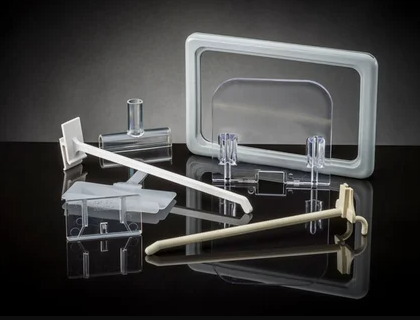
Yes, acrylic, also known as polymethyl methacrylate (PMMA), can be injection molded. Acrylic is a popular material in various applications due to its clarity, strength, and ease of processing. Here’s an in-depth look at the process, challenges, and applications of injection molding acrylic:
Properties of Acrylic (PMMA)
- Clarity:
- Acrylic is highly transparent, allowing up to 92% of light to pass through, making it an excellent alternative to glass.
- Strength:
- Although not as strong as polycarbonate, acrylic is much stronger than glass and has good impact resistance.
- Weather Resistance:
- Acrylic is resistant to weathering and UV light, making it suitable for outdoor applications.
- Chemical Resistance:
- It resists many chemicals but can be attacked by certain solvents and alcohols.
- Ease of Processing:
- Acrylic is relatively easy to mold and can be fabricated into complex shapes.
Injection Molding Process for Acrylic
- Material Preparation:
- Acrylic should be dried thoroughly before molding to remove any moisture that could cause defects. Typical drying conditions are 80°C to 90°C (176°F to 194°F) for 2-4 hours.
- Injection Molding Machine Setup:
- Temperature Control: Barrel temperatures typically range from 200°C to 250°C (392°F to 482°F), and the mold temperature should be between 40°C to 80°C (104°F to 176°F).
- Injection Pressure: Medium to high injection pressure is required to fill the mold cavity properly.
- Injection Speed: Moderate injection speed helps in avoiding defects like flow lines and air bubbles.
- Molding Cycle:
- Injection: The molten acrylic is injected into the mold cavity.
- Packing: Additional material is packed into the mold to compensate for shrinkage as the part cools.
- Cooling: The part is allowed to cool and solidify in the mold. Proper cooling time is essential to ensure dimensional accuracy and surface finish.
- Ejection: The solidified part is ejected from the mold.
- Post-Processing:
- Parts may require trimming to remove any flash. Polishing and surface treatments can enhance the clarity and appearance.
[elementor-template id=”4330″]
Challenges in Injection Molding Acrylic
- Moisture Sensitivity:
- Acrylic is hygroscopic and absorbs moisture from the air, which can cause defects during molding if not properly dried.
- Brittleness:
- Although strong, acrylic can be brittle and may crack or shatter under high impact or stress.
- Thermal Sensitivity:
- Acrylic has a relatively narrow processing window, and care must be taken to avoid thermal degradation.
- Surface Defects:
- Defects such as flow lines, air bubbles, and sink marks can occur if the processing parameters are not carefully controlled.
Applications of Injection Molded Acrylic
- Automotive:
- Tail lights, instrument clusters, and interior components.
- Lighting:
- Light covers, lenses, and diffusers.
- Consumer Goods:
- Display cases, picture frames, and household items.
- Medical Devices:
- Transparent components, covers, and housings.
- Signage and Displays:
- Indoor and outdoor signs, point-of-sale displays, and exhibition stands.
Benefits of Injection Molding Acrylic
- Optical Clarity: Ideal for applications requiring high transparency.
- Weather Resistance: Suitable for outdoor use and applications exposed to UV light.
- Versatility: Can be molded into complex shapes and designs.
- Surface Finish: Capable of achieving smooth, glossy surfaces without additional finishing.
[elementor-template id=”4331″]
Considerations
- Material Handling:
- Ensure acrylic is properly dried and handled to prevent moisture-related defects.
- Mold Design:
- Proper mold design, including smooth flow paths and adequate venting, is crucial to prevent defects and ensure quality.
- Processing Parameters:
- Precise control of temperature, pressure, and cooling time is essential for producing high-quality parts.
- Quality Control:
- Regular inspection and testing to ensure parts meet the required specifications and standards.
Conclusion
Acrylic is a versatile and widely used material that can be successfully injection molded into a variety of shapes and applications. By understanding and addressing the unique challenges associated with acrylic, manufacturers can produce high-quality, transparent, and durable parts for a wide range of industries. Proper drying, precise control of processing parameters, and careful mold design are essential for successful injection molding of acrylic.
Related Conten: Prototype Injection Molding
 DTG Mould Trade Process |
|
| Quote: | According to sample, drawing and specific requirement. |
|---|---|
| Discussion | Mold material, cavity number, price, runner, payment, etc. |
| S/C Signature | Approval for all the items. |
| Advance | Pay 50% by T/T |
| Product Design Checking | We check the product design. If some position is not perfect, or can not be done on the mould, we will send customer the report. |
| Mold Processing | Send report to customer once each week |
| Mold Testing | Send trial samples and try-out report to customer for confirmation |
| Mold Modification | According to customer’s feedback. |
| Balance Settlement | 50% by T/T after the customer approved the trial sample and mould quality. |
| Delivery | Delivery by sea or air. The forwarder can be designated by your side. |
 |
|

